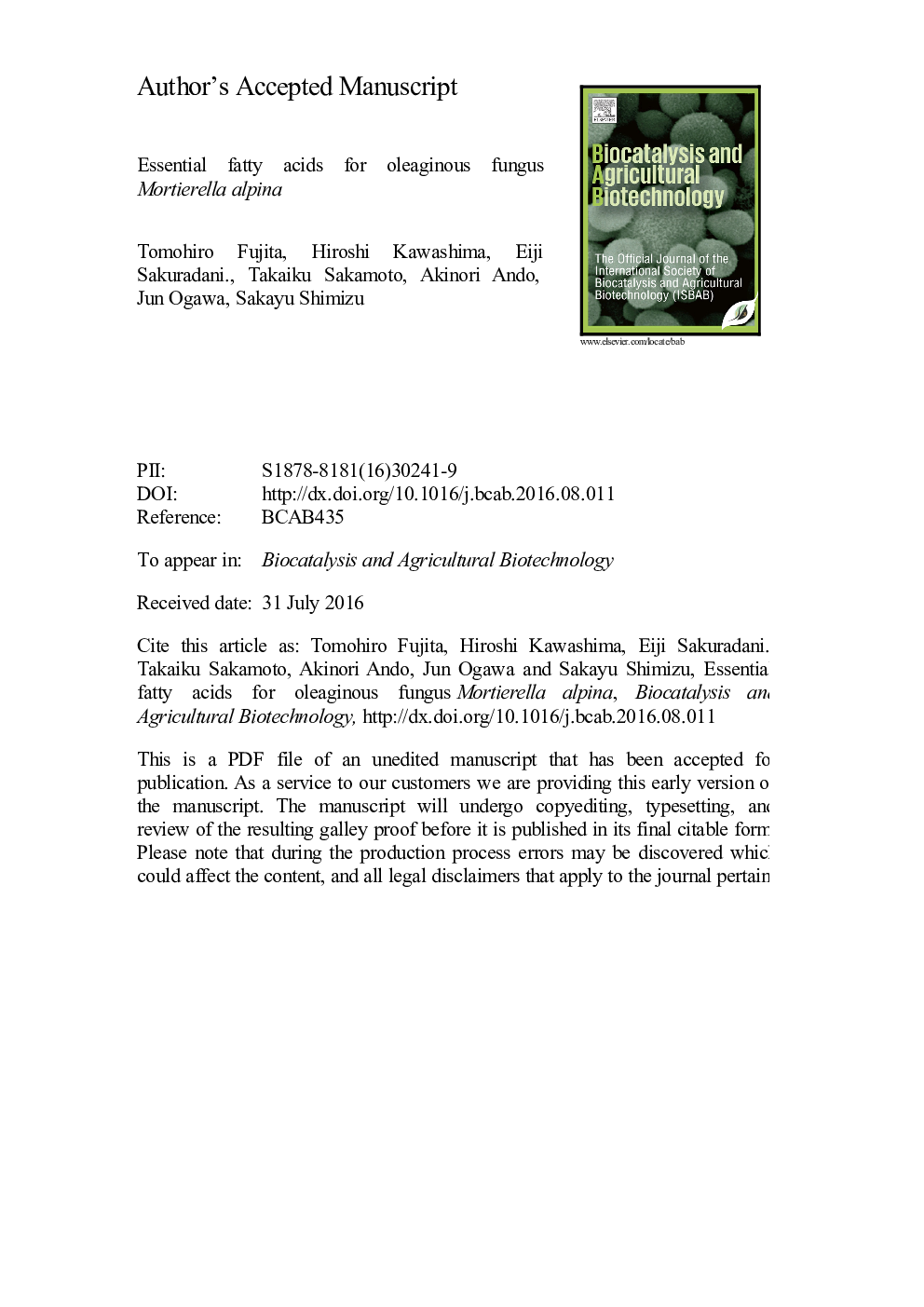| Article ID | Journal | Published Year | Pages | File Type |
|---|---|---|---|---|
| 8406218 | Biocatalysis and Agricultural Biotechnology | 2016 | 15 Pages |
Abstract
Oleaginous fungus Mortierella alpina 1S-4 accumulates arachidonic acid (20:4Ï6) as a major polyunsaturated fatty acid. However, 20:4Ï6 is not essential for the growth of M. alpina 1S-4, because various mutants that produce no 20:4Ï6 were isolated. M. alpina JT-180, a Î12 desaturation-defective mutant that was derived from M. alpina 1S-4 by treatment with a chemical mutagen, accumulates Mead acid (20:3Ï9) instead of 20:4Ï6. p-Anisidine was found to be a Î6 desaturation inhibitor in this study. The concentration of 0.1Â mg/ml of p-anisidine had an inhibitory effect on the growth of M. alpina JT-180. The addition of p-anisidine to the medium caused M. alpina JT-180 to produce only monoenoic acids such as oleic acid (18:1Ï9) and eicosenoic acid (20:1Ï9) as unsaturated fatty acids. The effects of exogenous fatty acids were investigated when M. alpina JT-180 was cultivated in medium containing p-anisidine. The addition of linoleic acid (18:2Ï6) and 6Z,9Z-octadecadienoic acid (18:2Ï9) restored the growth of M. alpina JT-180 cultivated on the medium containing p-anisidine, but palmitic acid (16:0), 18:1Ï9, and vaccenic acid (18:1Ï7) had no effect. For the growth of oleaginous fungus M. alpina, 18-carbon length fatty acids with more than two double bonds are considered to be essential.
Keywords
Related Topics
Life Sciences
Agricultural and Biological Sciences
Agricultural and Biological Sciences (General)
Authors
Tomohiro Fujita, Hiroshi Kawashima, Eiji Sakuradani, Takaiku Sakamoto, Akinori Ando, Jun Ogawa, Sakayu Shimizu,
